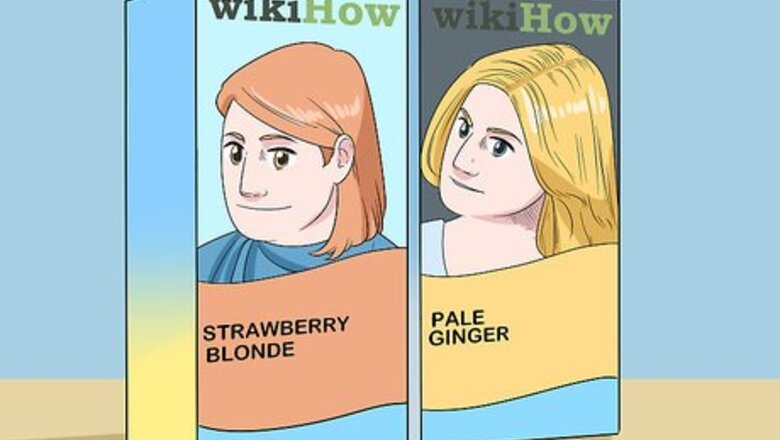
views
Choosing the Right Shade

Choose a color that works with your skin. You can dye your hair any shade of red you want, but there are some tricks that you can use to make the color look even better on you. In general, the darker your skin is, the darker shade of red you should go for. Hair stylist Karen Leight recommends that you bring your ideal hair color to your hair stylist, and have a conversation from there: "most of [the decision] will be [from] the collaboration between you and the stylist." For example, if you have very pale skin, try a strawberry blonde or pale ginger. If you have a darker skin tone, a darker red, such as auburn, might look better on you.

Match the shade of red to your skin's undertone. Much like skin, red hair has both warm or cool undertones. If red tends to look awful on you, you might be looking at the wrong shade of red. Instead, determine your skin undertone, then choose a shade of red that matches. For example: If you have cool undertones, choose a cool red with purple tints to it. Burgundy is a great example. If you have warm undertones, try a warm red with yellow tints to it. Copper is a good example.
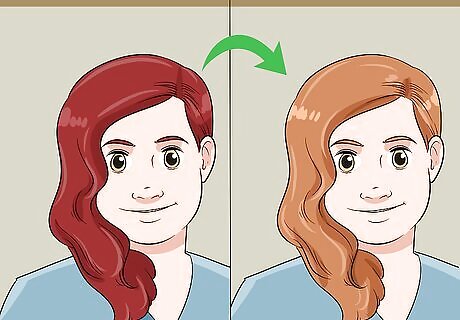
Test the color against your skin. Red hair can look stark against fair skin, especially if you are going dark red. Find something that is the same color that you want to dye your hair, such as a piece of cloth from the fabric store or a wig from a wig shop. Drape the cloth over your head or put the wig on, and decide whether or not you are happy with the look. If the color looks too harsh on you, consider going a bit lighter. Many wig and costumes shops will allow you to try wigs on, but you will have to purchase a wig cap first. These typically range $1 to $2. Don't worry about how the style of the wig looks on you — just focus on how the color looks against your skin tone. An alternative to this is to use an image editing program, such as Photoshop, or use a makeover program.
Preparing the Dye

Purchase a red hair dye. You can use an at-home dye kit, or your can buy the dye and developer separately from a hair salon or beauty supply store. If you are buying the dye and developer separately, you will also need to purchase a bottle of color-safe conditioner, plastic dyeing gloves, a plastic bowl to mix the dye in, and a tinting brush. You don't need a high developer for this. A 10 volume developer will work the best.

Get brown dye if you want to dye pale blonde hair dark red. This is very important. If you are starting with platinum-blonde hair, regular dye won't be dark enough to cover it up; it will end up pink! You will need to dye your hair brown first. Choose a medium-brown dye for best results. Avoid dark-brown dye, or the red won't show up. You will need to do the entire dyeing process twice: once for the brown dye and once for the red dye.
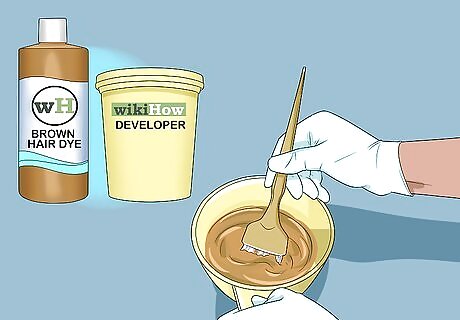
Mix your dye and developer using a 1-to-1 ratio. Pour enough 10 volume developer into a non-metal bowl to saturate your hair. Add an equal amount of dye into the developer, then stir it with a non-metal spoon until no streaks or swirls remain. If you are dyeing your hair brown first, prepare just the brown dye. Don't touch the red dye yet. If you are using a dye kit, prepare the dye according to the instructions that came with it.
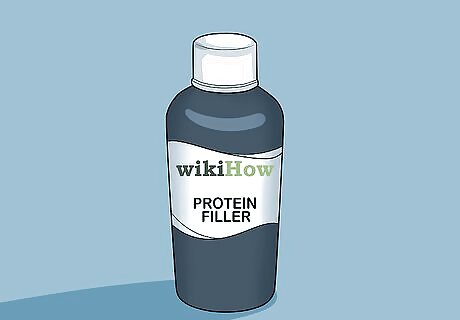
Add a protein filler if you bleached your hair blonde. While not necessary, this will help even out the color more. It will also help seal the color in. For best results, choose a red-based protein filler, and use the amount recommended on the bottle. In most cases, this will be half a bottle. You can buy it at a salon or beauty store. If your hair is naturally blond, you may not need a protein filler. If you are dyeing your hair brown first and then red, you only need to add the protein filler to the brown dye.
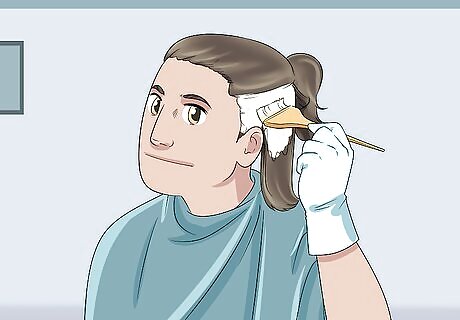
Bleach your hair instead if it is dark and you want to go lighter. Blonde hair can range from very pale, platinum-blonde to very dark, dirty blond. The lighter color you start out with, the easier it will be for you to get the color that's on the box. If you have very dark blonde hair that borders on light brown, however, you may need to bleach it first. Hair Stylist Karen light recommends going red "in stages so [you] don't get any funky colors." She adds, "a lot of people don't like [their hair] to be one solid color, they like having the dimension. [...][and] It's better for the integrity of the hair." After all, hair dye is translucent, so it only adds to what color is originally there. If you have dark blonde hair and want to go dark red, you don't need to bleach your hair. The dark hair dye will cover it up. If you have dark blonde hair and want to go pale, strawberry blond, then you need to bleach your hair first, otherwise the lighter color won't show up. Because of how light your hair is, you probably don't need to use higher than a 10 or 20 volume bleach. Follow the instructions on the package, and never leave the bleach on longer than needed.
Dyeing Your Hair
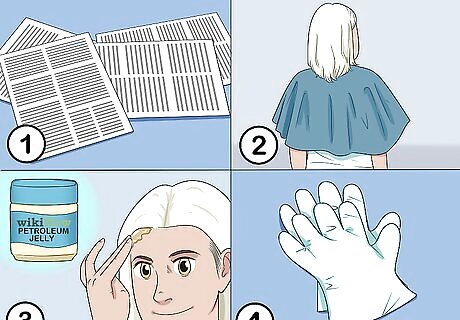
Protect your skin, clothing, and work surface. Cover your work surface with newspaper or plastic bags; it might be a good idea to cover your floor too. Next, put on a hair dyeing cape or drape an old towel around your shoulders. Apply petroleum jelly to the skin around your hairline, the back of your neck, and the tips of your ears. Lastly, pull on a pair of plastic hair dyeing gloves.
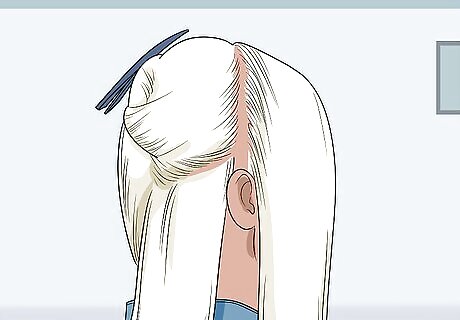
Brush your hair, then part it horizontally at ear-level. Use your thumbs or the handle of a tinting brush to create a horizontal part running across the back of your head at about ear level. Gather all of the hair above the part into a bun and clip it out of the way. Leave the rest of your hair hanging loose. If you have very short hair, try a half-up ponytail instead. If you have very thick hair, make the part a little bit lower; you'll have to work in thinner sections.
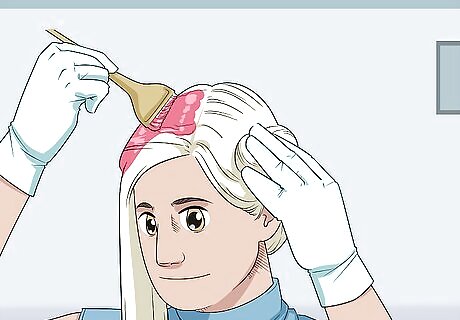
Apply the dye, starting from the ends. Gather a 1 to 2 in (2.5 to 5.1 cm) section of hair from one side of your head. Apply the dye to the ends, then work it towards the roots of your hair; reapply more dye as needed to the mid-lengths. Work your way across the back of your head towards the other side. If you prepared the dye in a bowl, apply it to your hair with a tinting brush. If you used a kit, apply the dye to your hair using the applicator bottle, then work it into your hair with your fingers or a tinting brush.
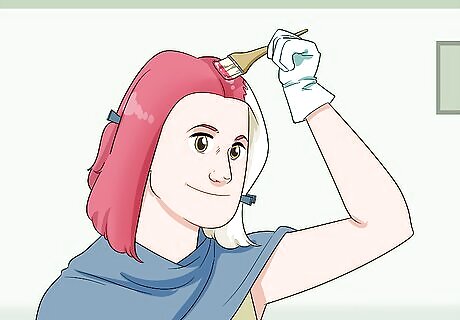
Let down another section of hair and repeat the process. How thick these sections are does not really matter, as long as you can easily saturate your hair with dye. When you reach the top of your head, be sure to apply the dye to your hairline and part. You can twist and clip the previous section of hair out of the way, or you can leave it hanging loose. You should be able to feel the difference between your dyed (wet) and undyed (dry) hair.
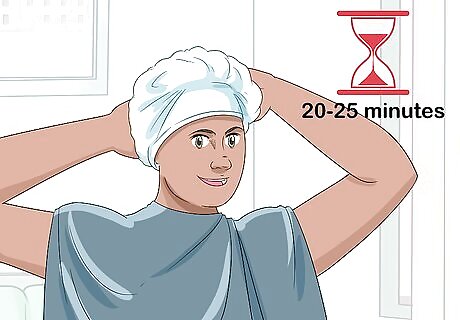
Allow the dye to process for the time recommended on the packaging. Gather all your hair and twist it into a loose bun. Cover your hair with a plastic shower cap, then wait for the time stated in the instructions that came with the dye. The shower cap will not only protect your surroundings against dye stains, but it will help the dye process faster. The processing time will vary from brand to brand, but it is typically 20 to 25 minutes.
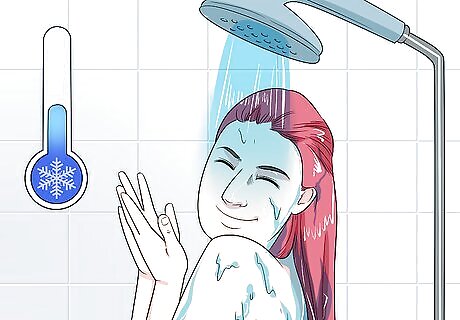
Rinse the dye out with cool water, then follow up with conditioner. Hair Stylist Karen Leight explains, "hot water will strip [your hair] more than cooler water." Do not use any shampoo, or you will wash the dye out. Use the conditioner that came with the dye kit. If you did not use a dye kit, use a conditioner formulated for dyed or color-treated hair. It would be a good idea to put the plastic gloves back on for this step, just in case the dye stains. Let your hair air-dry if possible. If you must use a hair dryer, apply a heat protectant first. Wait at least 3 days before washing your hair with actual shampoo. This 3-day break will allow the hair cuticle to close and seal the color in.
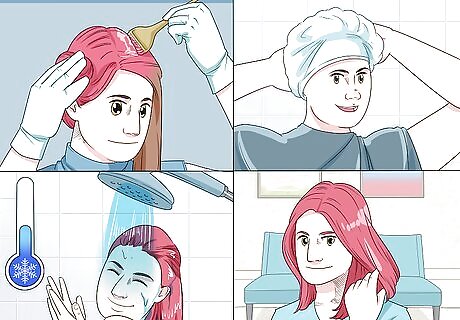
Repeat the process with red dye if you dyed it brown first. After you have rinsed the brown dye out with cool water and conditioner, let your hair dry completely. Repeat the entire dyeing process, but with red dye. Let the dye develop, then rinse it out with cool water and conditioner. Let the hair air-dry. You can do this immediately after dyeing your hair brown. You don't have to wait 3 days.
Maintaining the Color
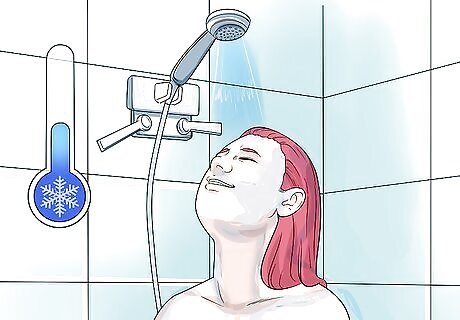
Use cool water when washing and rinsing your hair. The water doesn't have to be ice-cold, but it should be the coldest temperature that you can withstand. Hair Stylist Karen Leight explains, "the best thing to do is use a color save shampoo and conditioner, then rise it with cool water and towel blot it so it doesn't drip when it's wet." Warm or hot water will cause the dye to fade faster, causing all of your hard work to literally go down the drain.
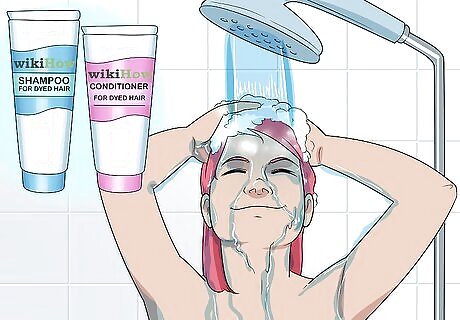
Use a color-safe shampoo and conditioner. Look for labels such as "for dyed hair" or "for color-treated hair." If you can't find such products, Hair Stylist Karen Leight recommends "color-save shampoos and conditioners and things without sulfates. [These products] will help the actual strands maintain the color as opposed to stripping it out." a sulfate-free shampoo and conditioner. Most shampoos and conditioners will say on the label if they are sulfate-free, but double-check the ingredients list. Sulfates are harsh cleaning agents added to many shampoos that can strip color from your hair. Every 2 to 3 washes, consider using a color-depositing conditioner instead of your usual one. This will help revitalize your color.
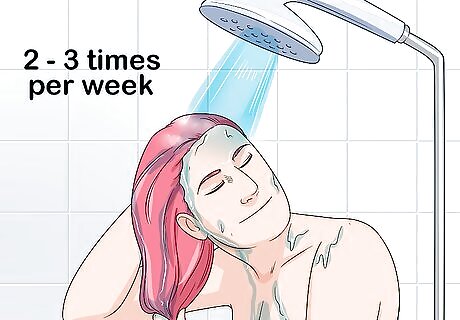
Wash your hair no more than 2 or 3 times per week. Even if you use cold water, your hair color will still fade a little each time that you wash your hair. Instead, wash your hair no more than 2 or 3 times a week. You can also consider co-washing on the days that you don't wash your hair. If your hair tends to get greasy, consider using some dry shampoo. Co-washing is where you wash your hair using just conditioner.
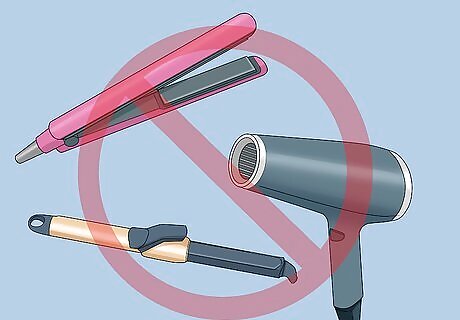
Limit the heat styling and use a heat protectant when you do heat style. This includes hair dryers, flat irons, and curling irons. Let your hair air-dry whenever possible, and try to find heat-free ways to straighten or curl your hair. Better yet, learn to embrace your natural hair texture! Heat not only damages your hair, but also causes hair dye to fade faster. If you must use a hair dryer, flat iron, or a curling iron, apply a good heat protectant first.
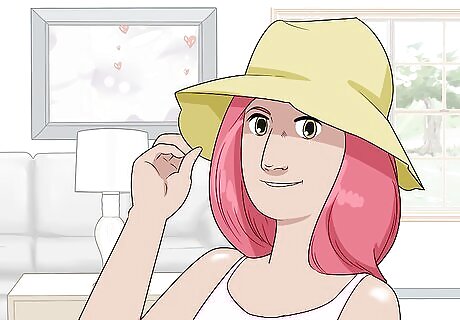
Protect your hair from sunlight and chlorine. Sunlight causes hair color to fade, especially red hair. Always wear a hat, scarf, or hood whenever you step out into the sun. More importantly, never let your hair get chlorine on it. If you want to go swimming, put all of your hair under a swim cap. If you don't like to wear things on your head, apply a UV protectant spray instead. It's like sunscreen, but for hair. Dyed hair is fragile, so chlorinated water will damage it further. It can also change your hair color.











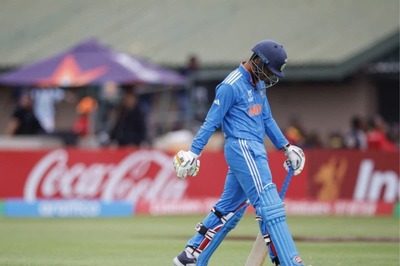






Comments
0 comment